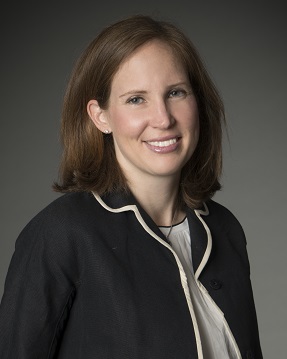U. Students Invent Video Game to Help Diagnose Lazy Eye in Kids

As a youngster, the University of Utah doctorate student owned every gaming platform from Nintendo to Atari to PlayStation 2. But his family, which hails from a business background, often told him that gaming is "just for entertainment."
"That became a challenge for me," Alsaleem said.
He found like-minded peers at The GApp Lab (which stands for Therapeutic Games and Apps) at the University of Utah.
Nestled in the campus health sciences building, in a room filled with Nerf guns, computers and yoga-ball chairs, the lab provides a "collision space" for developers, doctors, educators and researchers from a variety of disciplines dedicated to the idea that gaming can be more than a hobby.
Now one of Alsaleem's inventions is undergoing clinical trials at the John A. Moran Eye Center and is in the process of getting approval from the Food and Drug Administration for use as a diagnostic tool for lazy eye.It began, Alsaleem said, when he brought a new eye-tracking sensor back to the lab to play with and realized it could be used for detecting vision problems.
He and fellow student Daniel Blair developed a simple game. Set in the Wild West, the game requires you, the sheriff, to shoot vultures and bandits who are threatening the town.
By looking at the edges of the screen, you can move around. With a flick of the eyes tracked by the sensor you can shoot enemies or pick up hidden treasure.
The technology is surprisingly responsive, and the game unexpectedly addictive. Dr. Marielle Young, a pediatric ophthalmologist involved in the trials, said she and her colleagues were intrigued.
Lazy eye, or amblyopia, is a disorder in which the eye and brain do not work well together, causing the weaker eye to wander. If detected early, lazy eye is easy to fix. Left untreated, however, it can result in permanent vision loss.
"It's the same reason you can learn a language when you're young," Young said. "Your brain is plastic. If you have lazy eye that is not caught, we can't fix it when you're older."
But doctors face challenges in diagnosing lazy eye in kids, she said. For those who are too young to speak or read an eye chart, doctors must carefully watch for irregularities in how a child tracks objects or for differences in prescription between their two eyes.
These imprecise methods make it nearly impossible to pick up on milder cases of lazy eye, Young said.
"It's very important to diagnose young, but it's very difficult to diagnose young," she said.
Diagnosing Lazy Eye
Some video games purport to treat lazy eye, but Young said she is not aware of any that can diagnose it. And none make use of the eye-tracking technology that Alsaleem found that provides second-by-second data about where each of the player's pupils are moving.
By causing the objects in the game to move chaotically, he can measure how well a player's eyes travel in tandem and long it takes them to find objects.
Until recently, gaze-tracking technology was too expensive for widespread use, Alsaleem said. Now the sensors are cheap enough to be placed in every eye doctor's office and every parent's home.
"Just add software and an eye tracker that costs $100," he said.
Roger Altizer, director and founder of The GApp Lab, said he founded the lab with the belief that games can help people can learn better and heal faster.
"If you think about the times you've been the happiest or healthiest, it's when you're doing sports or when you're playing board games or any of that stuff," Altizer said. "We're really crossing that boundary of games as therapy or games as wellness."
Clinical Trials
Results from clinical trials show the Tecnis Symfony IOL has a low occurrence of nighttime glare and halos similar to that of a standard monofocal lens, while also providing continuous vision at all ranges without any drop-offs in between. In fact, 97 percent of patients in the trial indicated that they would elect to have the lens implanted again.
The University's Entertainment, Arts and Engineering Program
About 25 to 35 students from the university's Entertainment, Arts and Engineering program work in the lab in any given semester. Many go on to "launch off and do their own greatness, and that's what Ahmad has done," Altizer said.
Along with Blair and fellow U. student Ahmad Nassari, Alsaleem entered the video game into Microsoft's Imagine Cup, an international student technology competition, and placed third in the Innovation category.
Alsaleem is also working on another health-related project with The GApp Lab: creating a controller that helps people with spinal injuries ski and sail by puffing and sipping on a straw.
"Gaming," Alsaleem insisted, "is more than entertainment."